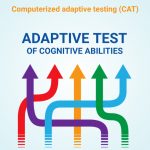Studies show that the performance in the psychomotor tests is connected with the neurotic syndromes, with being prone to accidents and with delinquency. It is interesting we often wrongly believe that people who are prone to car accidents are only unlucky. But this is not so! Actually, in unforeseen circumstances emotional difficulties cause maladjusted psychomotor reactions, that is bad driving which leads to a car accident.
Psychologists have long known that psychomotor abilities are connected to emotional reactions and adjustments (according to Gibson, 1994), so psychomotor tests can be used for studying character traits, and without the influences of desired answers, as in personality questionnaires.
Psychomotor skills can be divided into gross and fine. Gross psychomotor skills refers to the activity of large muscle groups or the whole body, while fine psychomotor skills are manipulative ability, precision and speed – skills which focus on limbs and small muscles. It is important to note that these two psychomotor skills are not interconnected (for example, is someone in not dexterous with their fingers, maybe they will not be a good watchmaker, but that does not mean they cannot set up scaffolds).
While doctors studied gross psychomotor skills, psychologists were more interested in fine skills. Fleishmann made the most significant contributions to the research of fine psychomotor skills. He established 11 specific factors of fine psychomotor skills:
- Limb coordination
- Steering precision
- Response orientation
- Reaction time
- Manual dexterity
- Tracing
- Hand precision
- Finger dexterity
- Arm-hand steadiness
- Wrist-finger speed
- Aiming.
Considering that there is no general psychomotor ability (or dexterity), what is measured are the listed specific psychomotor abilities and by different tests. In the majority of cases there are not paper and pencil tests (with the exception of Gibson’s labyrinth), but are usually comprised of different devices on which the examinee has to perform a psychomotor operation.
We differentiate between dexterity test, tracing, reflex (reaction) tests and other psychomotor tests.
Dexterity tests are tests which measure the speed and accuracy of simple, routine movements – dexterity and the speed of fist and fingers movements. They are used in staff selection for jobs which require precise manipulating of small objects. (The best known are Minnesota and the O’Connor’s dexterity tests but Purdue Pegboard test, the O’Connor tweezers dexterity test, hand tool dexterity test and the Grooved Pegboard test are also used.)
Tracing tests enable the measuring of precision and eye field coordination. In this type of test, the examinee must, most often by manipulating a steering mechanism with both hands, follow a route. Performance is determined as the time of passing the route. (Examples of this group of tests are Bonnardel’s sinusoid, Bonnardel’s Omega test and the Turner test).
Reflex (reaction) tests measure reaction latency, that is the time that passes from the stimulus to the candidate’s reaction to the stimulus.
In the “other psychomotor tests” category is the steadiness test which is used to measure the steadiness of the hands and tapping tests, where we differentiate between the finger-tapping test and plate-tapping tests.
These types of tests are not always suitable for predicting a candidate’s accomplishment at a certain workplace because both motivation and practice significantly influence the results. These tests are used less than IQ and personality tests, but they do represent an important addition to the above-said tests. However, psychomotor skills tests are not connected with IQ tests, so for certain tasks, they can significantly increase the prognostic value of the battery, that is, to put in layman’s terms – they do contribute to selecting the best person for the job.
Literature:
- Gibson, H. B. (1994). Priručnik za Gibsonov spiralni labirint. Jastrebarsko: Naklada Slap.
 English
English



